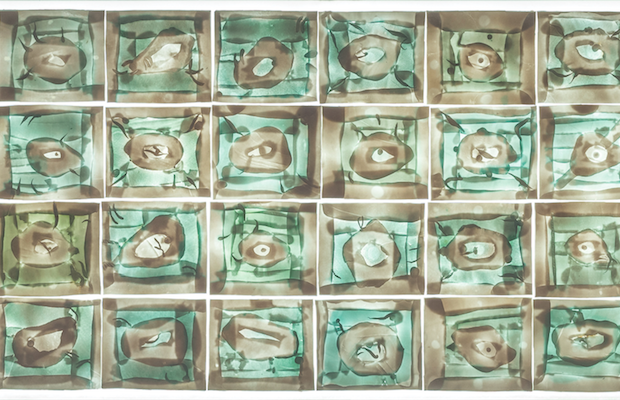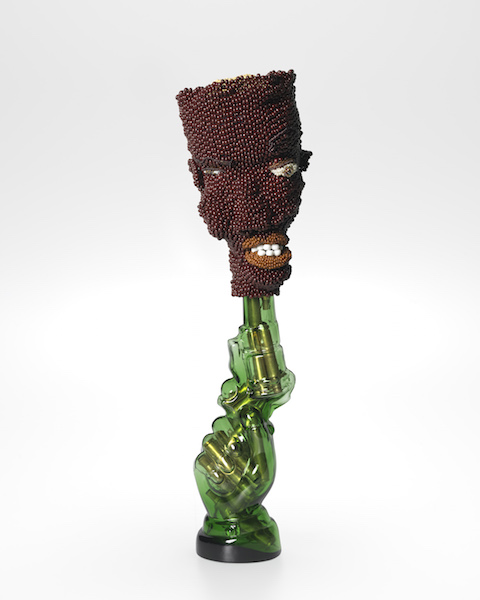 Joseph Hu Photo
Joseph Hu Photo
Design
Curator’s Eye
We asked curators of leading twentieth-century and contemporary design collections to discuss one object that they feel is particularly noteworthy. Here is a gallery of their choices.
 Joseph Hu Photo
Joseph Hu Photo
We asked curators of leading twentieth-century and contemporary design collections to discuss one object that they feel is particularly noteworthy. Here is a gallery of their choices.
The figure is a symbolic portrait of the countless victims of gun violence in the United States

Joyce J. Scott (1948-) HEAD SHOT, 2008. Glassbeads, mold-blown glass, threat, and bullet casings. Chrysler Museum of Art / Ed Pollard Photo, Courtesy Goya Contemporary Gallery
BALTIMORE NATIVE AND MULTIMEDIA artist Joyce Scott makes sculptural works out of beads—a material traditionally used for decoration or adornment—that convey complex and often difficult political and social messages. The Chrysler Museum of Art’s recent acquisition, Head Shot, directly confronts the issue of gun violence in the United States. Since the work’s creation in 2008, it has taken on deeper, more urgent meaning in the wake of the high-profile shooting deaths of Trayvon Martin, Michael Brown, and Tamir Rice, as well as numerous mass shootings.
Head Shot is a hybrid structure: a transparent green liquor bottle in the shape of a hand clutching a gun stands in for a human figure, while a head made out of glass beads rests on the muzzle of the gun. (Scott created the beaded head using an improvisational, freeform stitching technique that enables it to stand on its own without a supporting structure.) The bottle is filled with empty shell casings, tangible evidence of a real gun. In Scott’s piece, the gun has gone off—though not visible in the photograph, the beading actually depicts the subject’s brain exploding out the top of the skull. Depicted in mid-shot, the figure is a symbolic portrait of the countless victims of gun violence in the United States, particularly within the African-American male community. While Head Shot is provocative and has a visibly challenging message, Scott’s multilayered and expertly crafted work drives us to look more closely at the issues it tackles—and is a commentary on the power of art to open lines of conversation and communication about grave social problems, and even to prompt change.
Diane C. Wright
Carolyn and Richard Barry Curator of Glass
Chrysler Museum of Art
Norfolk, Virginia

MODERN Magazine takes a fresh and intelligent approach as it examines buildings and interiors, furniture and objects, craft and art—delving into the creative process and offering sage advice for both the seasoned and novice collector or connoisseur.
© 2019 MODERN Magazine Media, LLC

Chad Jensen opened Method & Concept in Naples, Florida, in 2013 according to the Art Basel Miami Beach...

The annual Milan Design Week has long been the established benchmark of the industry. Comprised of the massive...

Those who don’t consider glass a major art medium will think again after visiting a fascinating exhibition that...

For Jane Withers, the London-based curator and writer who led Water Futures, design incubator A/D/O’s latest initiative, this...

Why an uncharacteristically meditative Memphis design mesmerized one resourceful bidder

TO STROLL ALONG STOCKHOLM’S HARBORS is to inhale the essentials of the city’s largesse and welcoming grandeur: the...